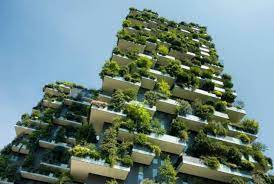Courtesy : greenbuilt.org
Green building
What is green building?
Green building, or sustainable design, is the practice of increasing the efficiency with which buildings and their sites use energy, water, and materials, and of reducing impacts on human health and the environment for the entire lifecycle of a building. Green-building concepts extend beyond the walls of buildings and include site planning, community and land-use planning issues as well.
Why is green building important?
The growth and development of our communities has a large impact on our natural environment. The manufacturing, design, construction and operation of the buildings in which we live and work are responsible for the consumption of many of our natural resources.
Click here to learn how the work of our nonprofit, the Green Built Alliance, helps to advance the green-building movement.
In the United States, buildings account for:
- 39% of total energy use
- 68% of total electricity consumption
- 30% of landfill waste
- 38% of carbon dioxide emissions
- 12% of total water consumption
Environmental benefits of green building:
- Enhance and protect biodiversity and ecosystems
- Improve air and water quality
- Reduce waste streams
- Conserve and restore natural resources
Economic benefits of green building:
- Reduce operating costs
- Improve occupant productivity
- Enhance asset value and profits
- Optimize life-cycle economic performance
Social benefits of green building:
- Enhance occupant health and comfort
- Improve indoor air quality
- Minimize strain on local utility infrastructure
- Improve overall quality of life
Statistics and benefits overview courtesy of the U.S. Environmental Protection Agency.




